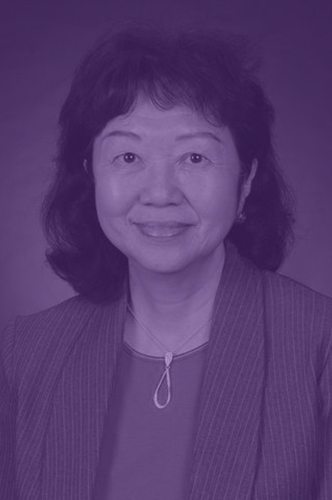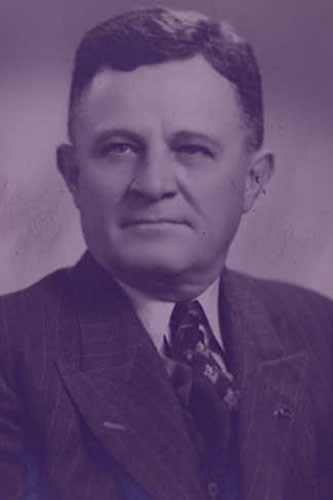Excellence is in Our DNA: LSU College of Science Announces 2020 Hall of Distinction Honorees
Baton Rouge, La. — The endless pursuit of excellence and the fervent dedication to scientific leadership is woven into the DNA that makes up the College of Science. Join us as we recognize the exceptional accomplishments of the College of Science 2020 Hall of Distinction honorees. Though these leaders have plenty of countable achievements in their individual fields, their stories reveal a common thread—a fierce devotion to their work and a deep-rooted passion to give back to their communities.

Dr. Rick Rauch, Distinguished Alumnus, LSU Department of Physics and Astronomy, NASA Project Manager
Receiving his bachelor’s in physics from LSU in 1977, Dr. Rick Rauch has led an impactful
life that was deeply affected by his time spent in Nicholson Hall. His undergraduate
years were spent shadowing Dr. Bill Hamilton in the early days of gravitational wave
detection research. This work required students, like Dr. Rauch, to learn a wide range
of unusual experimental techniques and to appreciate quickly the level of care necessary
for this type of experimental research. After graduating from LSU, Dr. Rauch decided
to continue his pursuit of gravitational research and continued his education as a
doctoral student at Stony Brook University. Once he completed his Ph.D. in 1982, his
interests drifted into nuclear weapon effects and strategic space defenses against
nuclear weapons. This new path led to Dr. Rauch’s co-founding of the Defense Group,
Inc. in Washington D.C. During a leave of absence to pursue a pilot’s license, Dr.
Rauch was approached with a new opportunity to join NASA’s Stennis Space Center in
southern Mississippi. This opportunity fulfilled another of his passions—space flight.
During his career, Dr. Rauch influenced the conceptual design and systems engineering
of ballistic missiles, manned spacecraft, and ballistic missile and air defense systems;
rocket propulsion testing project management; as well as the engineering, design,
analysis, and management of propulsion ground test facilities and special test equipment.
His present work includes the design and testing of NASA’s new Space Launch System.
In 2013, NASA and the agency’s Space Flight Awareness Program recognized Dr. Rauch
for his outstanding support of human space flight. In addition, in 2017, Dr. Rauch
was awarded NASA Headquarters’ prestigious Exceptional Achievement Medal for his accomplishments
in advanced propulsion technologies. Beyond his scientific accomplishments and passion
for aviation, Dr. Rauch has been known to write poetry and fiction and has been published
in outlets, such as Crack the Spine literary magazine and Jet Fuel Review. He has
also been active in his support of institutions, the Smithsonian Air and Space Museum
as an Air and Space Friend honoree. He has also recognized the impact that LSU, the
College of Science and the Department of Physics and Astronomy has had on his life
with a major gift to the university and its future students.
Video honoring Dr. Rick Rauch

Dr. Winnie Wong-Ng, Distinguished Alumna, LSU Department of Chemistry, NIST Research Chemist
Celebrated internationally for her contributions in the field of crystallography,
crystal chemistry, and phase equilibria, Dr. Winnie Wong-Ng is a distinguished LSU
alumna, philanthropic supporter and mentor to young scientists. Dr. Wong-Ng received
her Ph.D. in chemistry in 1974 from LSU. From there, she became a research scientist
at the University of Maryland before moving to the National Bureau of Standards. Her
work revolved around Powder Diffraction File at the International Centre for Diffraction
Data, and in the early 1980s, Dr. Wong-Ng was in charge of converting the diffraction
data to a computerized system. Following the success of modern computer databases,
she continued to be involved in the preparation of high-quality experimental standard
reference patterns for a variety of high-teach materials to be included in the Powder
Diffraction File. To date, she has been involved in more than 800 reference patterns,
and to recognize her efforts, ICDD presented her with the 2002 PDF-4 Consulting Editor
Award. In the early 1990s, Dr. Wong-Ng involved members of the International Union
of Crystallography and the American Crystallographic Association in a round-robin
study of a prototype ruby sphere standard. Today, the ruby spheres are being used
worldwide for single crystal diffractometer calibrations. With partial support from
the Department of Energy, she developed the most reliable phase diagrams of complex
systems through innovative experimental designs and modeling. Her phase equilibria
have been used around the world as guidance for processing and for designing flux
pinning experiments to improve material properties for both first-generation and second-generation
superconductor wires and tapes. Dr. Wong-Ng’s work in the phase equilibria research
of the first-generation superconductor wires led to her Department of Commerce Bronze
Medal in 2002, and her efforts in the second-generation tapes resulted in the Spriggs
Phase Equilibria Award from the American Ceramics Society in 2007. Dr. Wong-Ng has
authored and coauthored more than 350 papers, and she has given almost 300 talks over
the course of her career. Her involvement with the American Crystallographic Association
has been long and dedicated, and she was named a Fellow in 2014. And in 2018, she
was not only named the Academician of World Academy of Ceramics, but a Fellow of the
American Association for the Advancement of Science, as well. The following year,
she received the Distinguished Life Membership of the American Ceramic Society, in
recognition of her research contributions and volunteer service. Dr. Wong-Ng has served
from Division Chair of the Electronics Division of the American Ceramic Society, to
the secretary and treasurer of the International Union of Crystallography, to the
Board of Directors of the Applied Superconductivity Conference. Currently, she serves
as a research advisor to a number of NRC postdoctoral fellows at the National Institute
of Standards and Technology and undergraduate students at the University of Maryland.
Each year, she also co-organizes the National Educators’ Workshop for Material Science
and leads the MSEL exhibit book at the Science and Engineering Alliance Conference
to introduce students to the opportunities of materials research at NIST. With more
than 30 years of academic success behind her, Dr. Wong-Ng has demonstrated an incredible
dedication to science and outreach to our younger generations of scientists.
Video honoring Dr. Winnie Wong-Ng

Col. James Perry Cole, Professor of Mathematics, Former Director of Student Life, Former Head Coach of LSU Men’s Golf Team
The late Col. J. Perry Cole was a true servant to LSU, the Baton Rouge community and
the State of Louisiana. Col. Cole arrived on the LSU campus in 1908 and was a member
of the inaugural freshman football team. He was elected student body president and
graduated in 1912 with a degree in Civil Engineering. As an officer in the U.S. Army,
Col. Cole served in the 1914 occupation of Veracruz and as a World War I battalion
commander in the same regiment of the 4th Division with his dear friend, General Troy
Middleton, who would later become president of LSU in 1951. In 1918, Col. Cole was
injured in France and retired with the rank Major in 1919. That same year, he returned
to LSU as a mathematics instructor and assisted in the formation of the Louisiana-Mississippi
section of the Mathematical Association of America. In June 1926, he received his
master’s in mathematics from LSU and subsequently accepted a position as head of the
Mathematics Department at Louisiana Polytechnic Institute. In 1932, he returned to
Baton Rouge to become LSU’s Dean of Student Affairs. In addition to his new position,
Col. Cole became head of freshman mathematics and was instrumental in the organization
of several societies, including Alpha Lambda Delta, Phi Eta Sigma, Omicron Delta Kappa,
and Mortar Board. He authored the original criteria for the LSU Athletics Hall of
Fame and nominated its first member. Col. Cole served for 11 seasons as LSU Men’s
Golf head coach and is credited with two NCAA championships. His 1940 team was only
the second in any sport in LSU’s athletics history to earn an NCAA championship. He
was inducted into the Golf Coaches Association of America Hall of Fame in 2012 for
his influence in breaking Ivy League dominance in collegiate golf and opening the
door for other institutions to compete. In numerous periodicals and publications,
he is credited as the “Father of LSU Golf.” Col. Cole also served as the inaugural
director of the Louisiana’s Boys State and Girls State, positively altering the lives
of countless young men and women across the state. He is credited with helping to
create the campus War Memorial Tower and is responsible for leading the team that
planted the historic Oak Grove in honor of the LSU fallen in WWI. In 1943, at the
request of Governor Sam H. Jones, Col. Cole took a part-time leave of absence to initiate
the creation of the Louisiana National Guard and was elevated to the rank of Colonel.
With more than 50 years of association to LSU and the Baton Rouge community, Col.
Cole’s contributions transformed the landscape of the campus.
Video honoring Col. J. Perry Cole

Dr. Van Remsen, Ornithologist and former Museum of Natural Science Curator of Birds, John S. McIlhenney Distinguished Professor of Natural Science
A catalyst in science research and education at LSU, Dr. Van Remsen was a curator
of ornithology at the LSU Museum of Natural Science, a professor of biological sciences,
as well as the John S. McIlhenney Distinguished Professor of Natural Science. Dr.
Remsen’s tenure elevated the reputation of the museum both on the national and international
fronts, making it the most actively growing research museum and most important university
museum in the world for the study of birds. Dr. Remsen is considered one of the world’s
foremost ornithologists, with a special expertise in Neotropical birds. Papers that
he published in the 1980s and 1990s are now considered classics in research, as they
laid the foundation of our understanding of the ecology and biogeography of South
American birds. During his career, Dr. Remsen trained more than 30 graduate students
and myriad of undergraduates, many of who have now gone on to faculty and curator
positions in North America. At least four of his students now work at the Smithsonian
Institution. He has trained many international students who took their ornithological
expertise and passion for birds and biology back to their home countries to train
the next generation of scientists. Dr. Remsen has been recognized many times over
the years for his contributions to ornithology, including winning the highest award
of the American Ornithologists’ Union, the William Brewster Medal, and, maybe most
importantly, a new species of Andean bird—the Chestnut-bellied Cotinga, or Doliornis
remseni—named after him by his former students and colleagues. With financial assistance
from the McIlhenney family, Dr. Remsen took his students on many summer-long expeditions
to Peru and Bolivia and supported expeditions by his students to other countries.
In the process, his research group collected more than 100,000 bird specimens, establishing
the museum as a world-class natural history institution. In addition to research and
teaching, Dr. Remsen’s service to the ornithological community is beyond exceptional.
He has worked on the American Ornithologist’s Union bird check-list committee for
30 years. He has been enormously influential in several important South American bird
committees dealing with classification and nomenclatural issues related to Neotropical
birds, and his public outreach to the birding community in both North and South America—not
to mention Louisiana—have made him “the” expert that every birder wants to spend time
with in the field. After such legendary pursuits, Dr. Remsen retired in 2019 with
41 years of stellar service to the Museum, the Department of Biological Sciences,
the college and LSU.
Video honoring Dr. Van Remsen

Dr. Harold Silverman, Professor Emeritus, LSU Department of Biological Sciences, Former Vice Provost
Throughout his 26-year career at LSU, Dr. Harold Silverman made significant contributions
and transformative changes to both the university and the College of Science as a
faculty member through research, teaching and service, and as an administrator in
the roles of Department Chair, Dean, and Interim Executive Vice Chancellor and Provost.
Although he retired from LSU in 2007, Dr. Silverman’s impact on the College of Science,
the Department of Biological Sciences and across the entire LSU campus is still very
much apparent. Dr. Silverman was an enthusiastic teacher and faculty member, who served
on a number of search committees, even in his pre-tenure days. He was an involved
collaborator with students and other department members on several projects, including
a divergence to the invasive zebra mussel. He contributed significantly to community
outreach as a perennial science fair judge, elementary school team coach, and PTO
officer. Dr. Silverman was especially interested in providing research experiences
for undergraduate students, a theme carried over from his time at Pan American and
one that he developed into a major program at LSU. It was as an administrator, however,
that Dr. Silverman really revealed the extent and impact of his achievements. In 1988,
Dr. Silverman became associate dean of the college and eventually served as interim
dean from 1989 to 1990. He then went on to serve as Associate Dean for Research and
Administrative Affairs under Dean Peter Rabideau from 1990-1997. It was during this
time that the then-departments of Biochemistry, Microbiology, Plant Biology, and Zoology
and Physiology merged into the now-Department of Biological Sciences to better showcase
the departments' accomplishments in teaching, research, and funding. Soon after this
merger, Dr. Silverman was selected to serve as the inaugural chair of the new Department
of Biological Sciences from 1997-1999. After a short stint as interim dean, Dr. Silverman
was eventually appointed as Dean of the College of Science in 2000 before moving to
higher administrative positions a few years later. In his tenure at LSU, Dr. Silverman
brought in, at the time, an unprecedented $29,173,900 in funding. Although the funding
is impressive in itself, it was the attention and the special projects it brought
that were important to the growth of the college. The funding was awarded by the National
Institutes of Health, the Howard Hughes Medical Institute, the National Science Foundation,
Sea Grant, and the Louisiana Board of Regents. Among his numerous initiatives, Dr.
Silverman was the initiator of the Louisiana IDeA Networks of Biomedical Research
Excellence, he wrote six successful LEQSF proposals for Life Science Doctoral Fellowships,
and he was instrumental in establishing the Governor’s Information Technology Initiative,
which ultimately led to the formation of what is now known as the Center for Computation
and Technology. In his time at LSU, Dr. Silverman has served not only the College
of Science, but the university, with the highest possible distinction, and his impact
is still recognized today.
Video honoring Dr. Harold Silverman